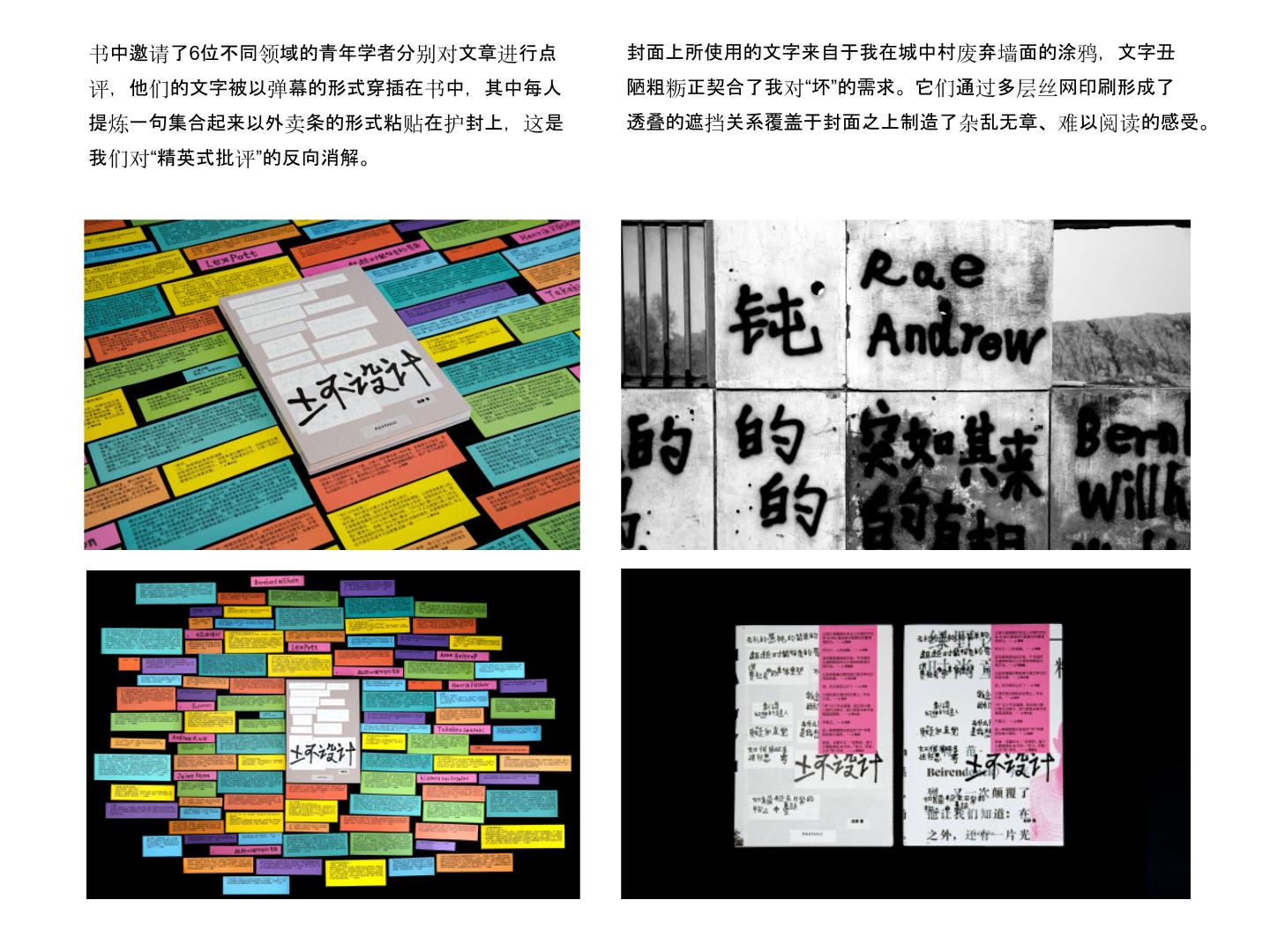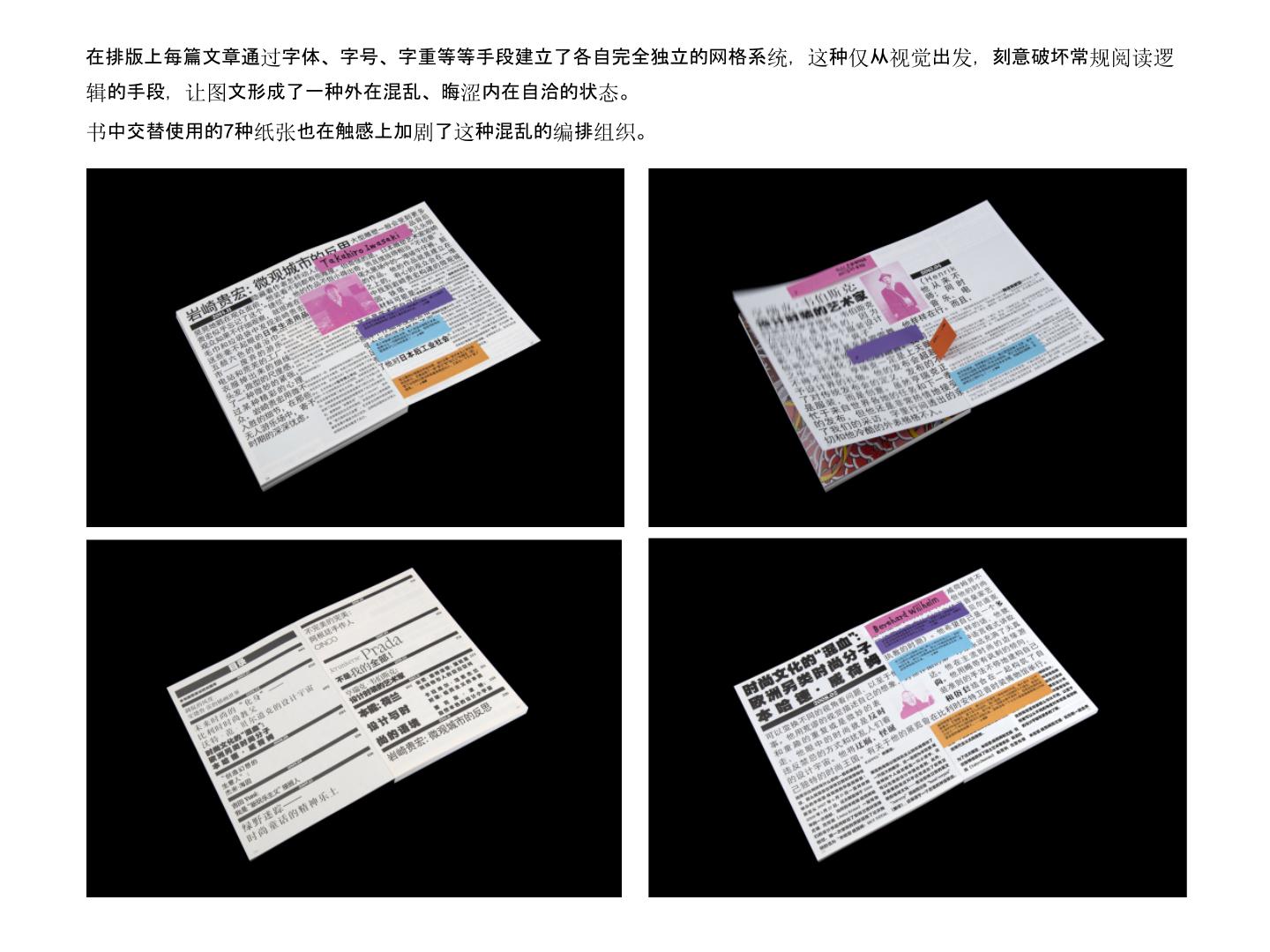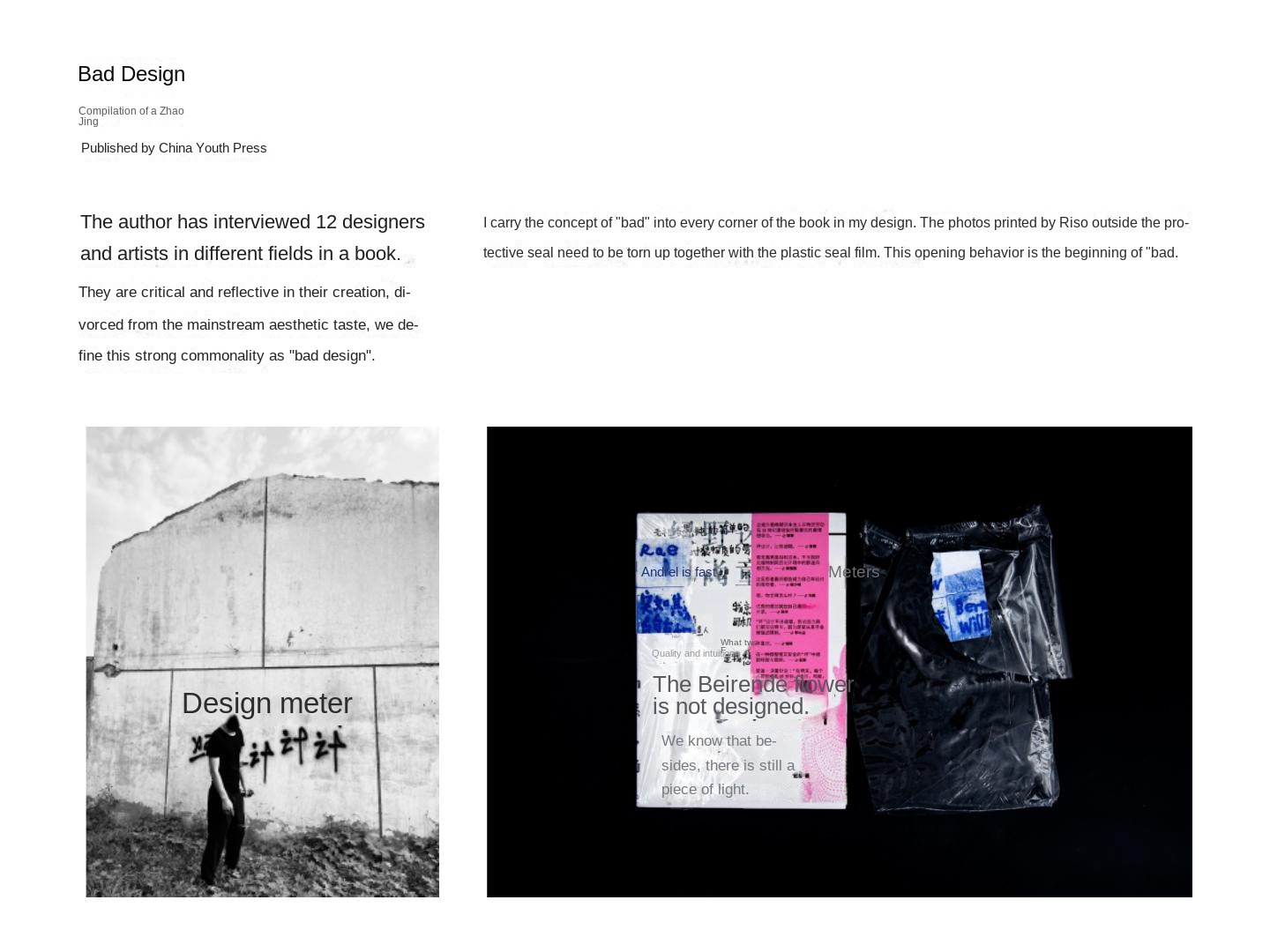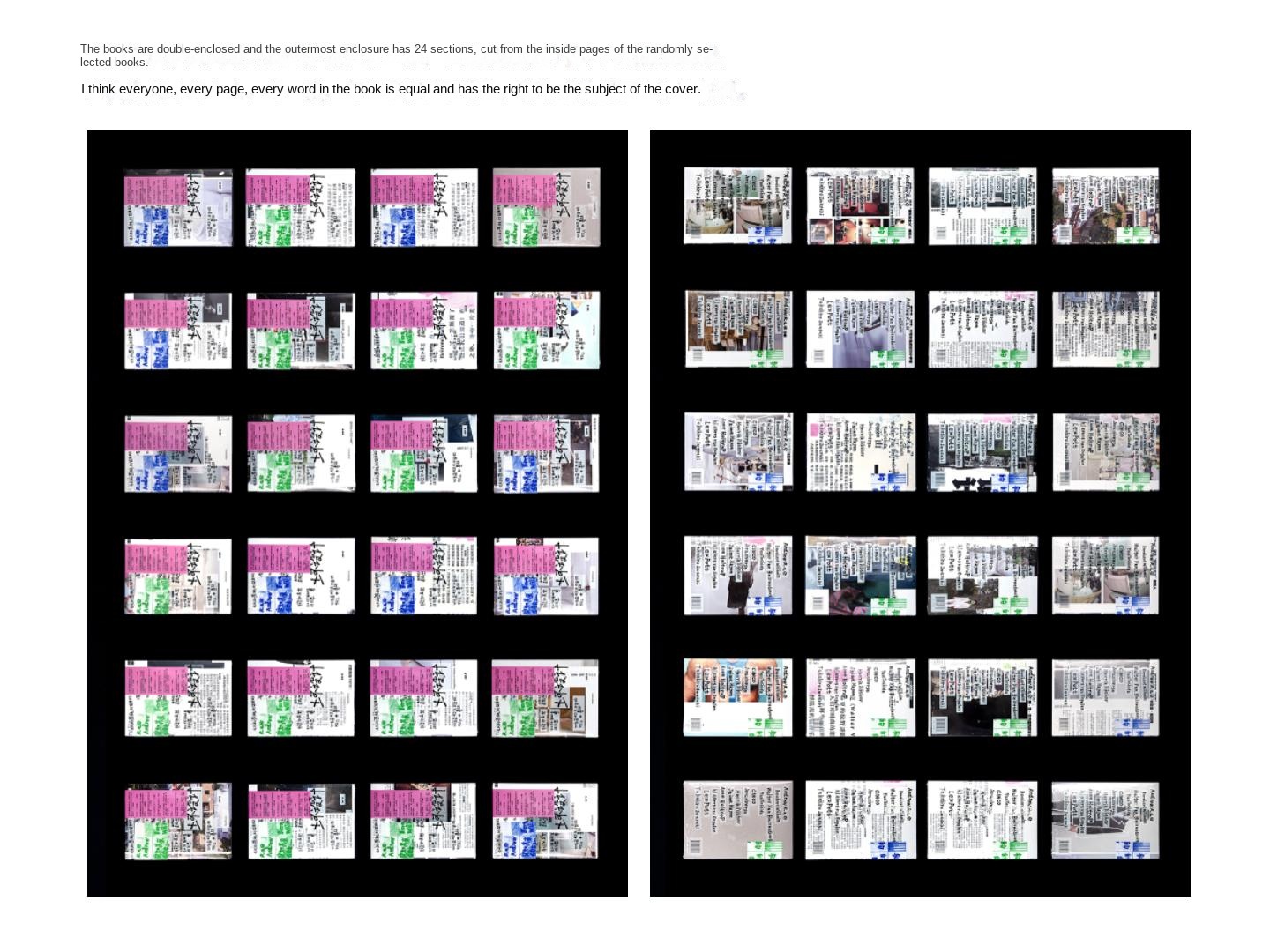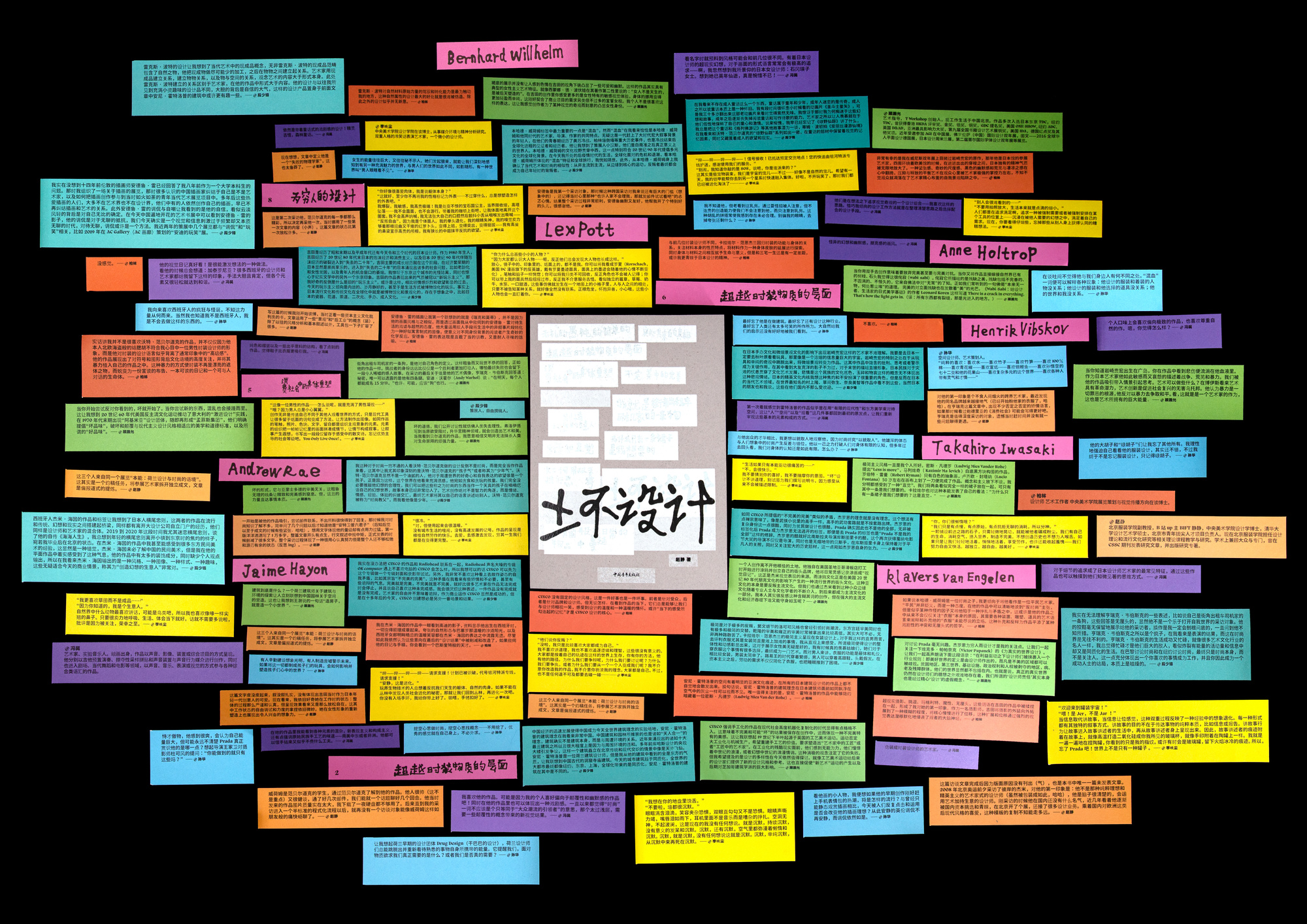
Bad Design
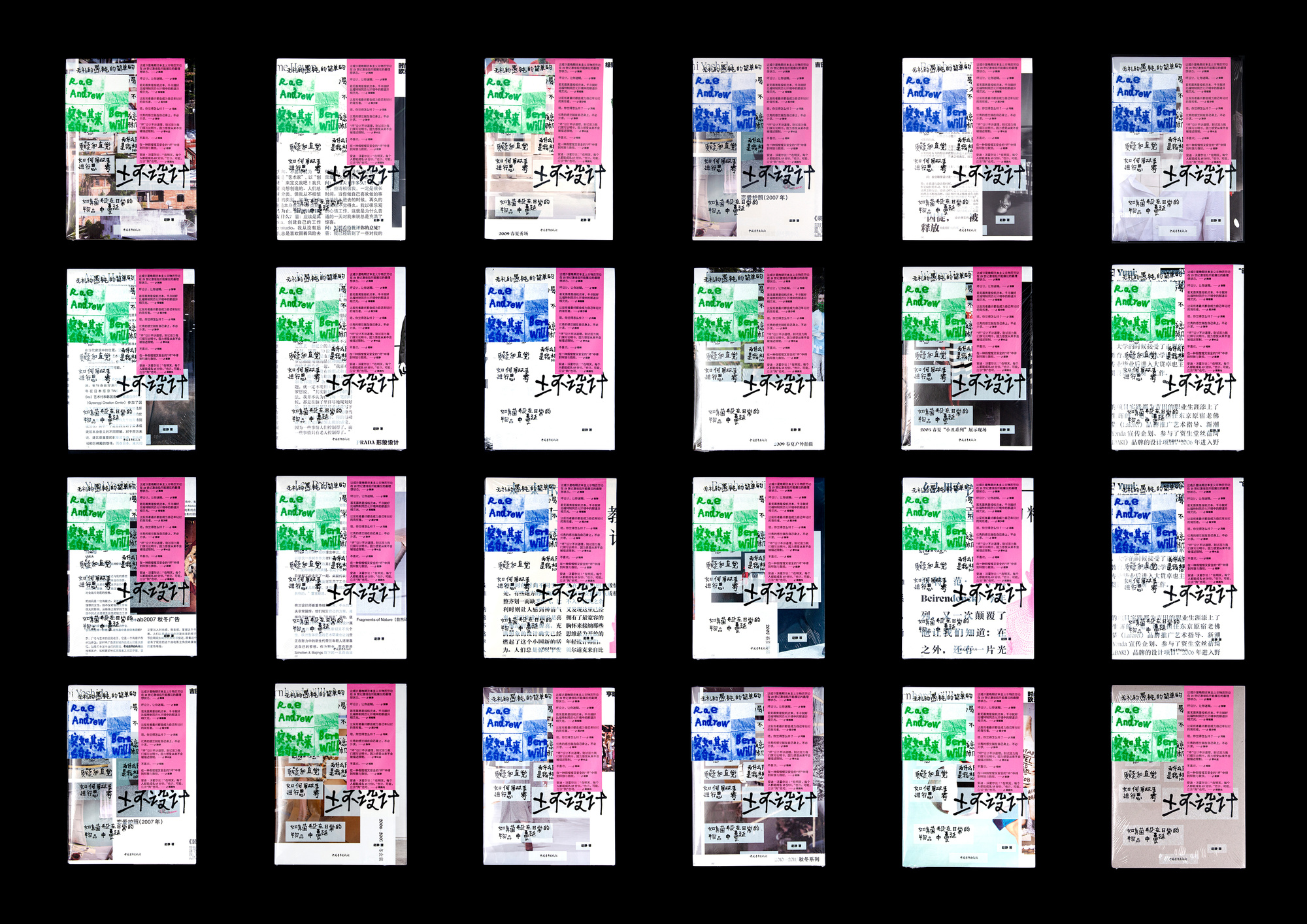
Front
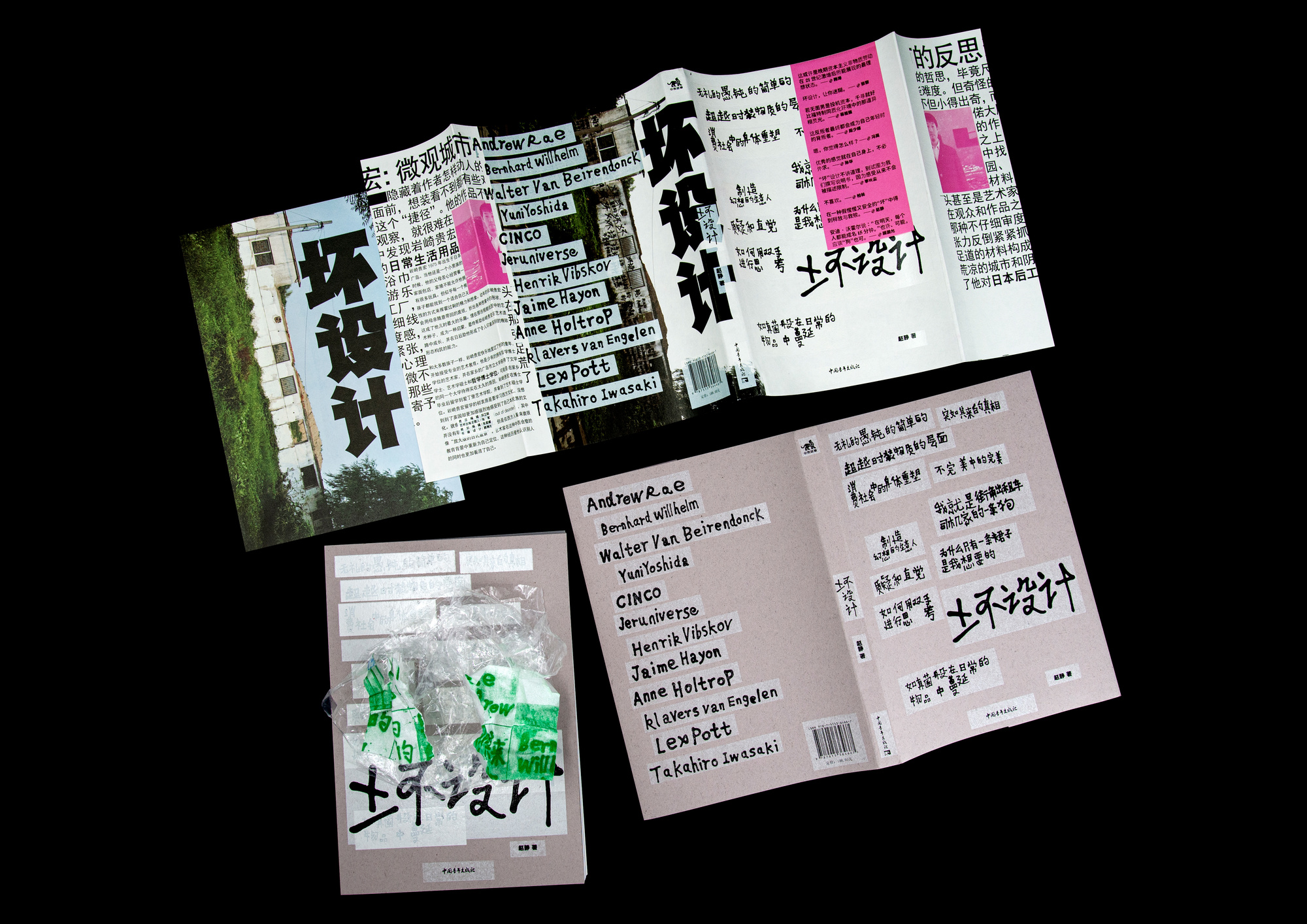
Expand
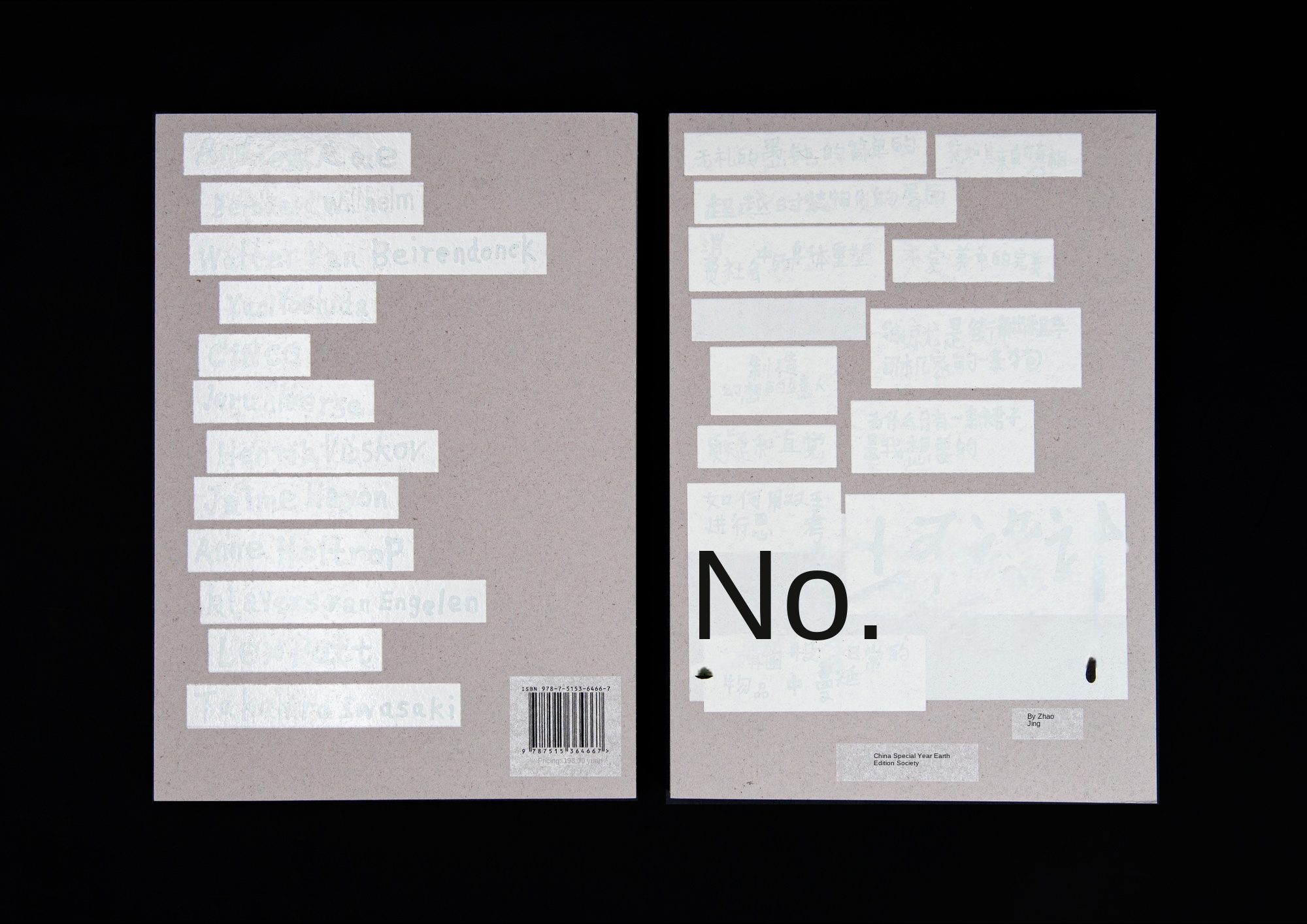
Back
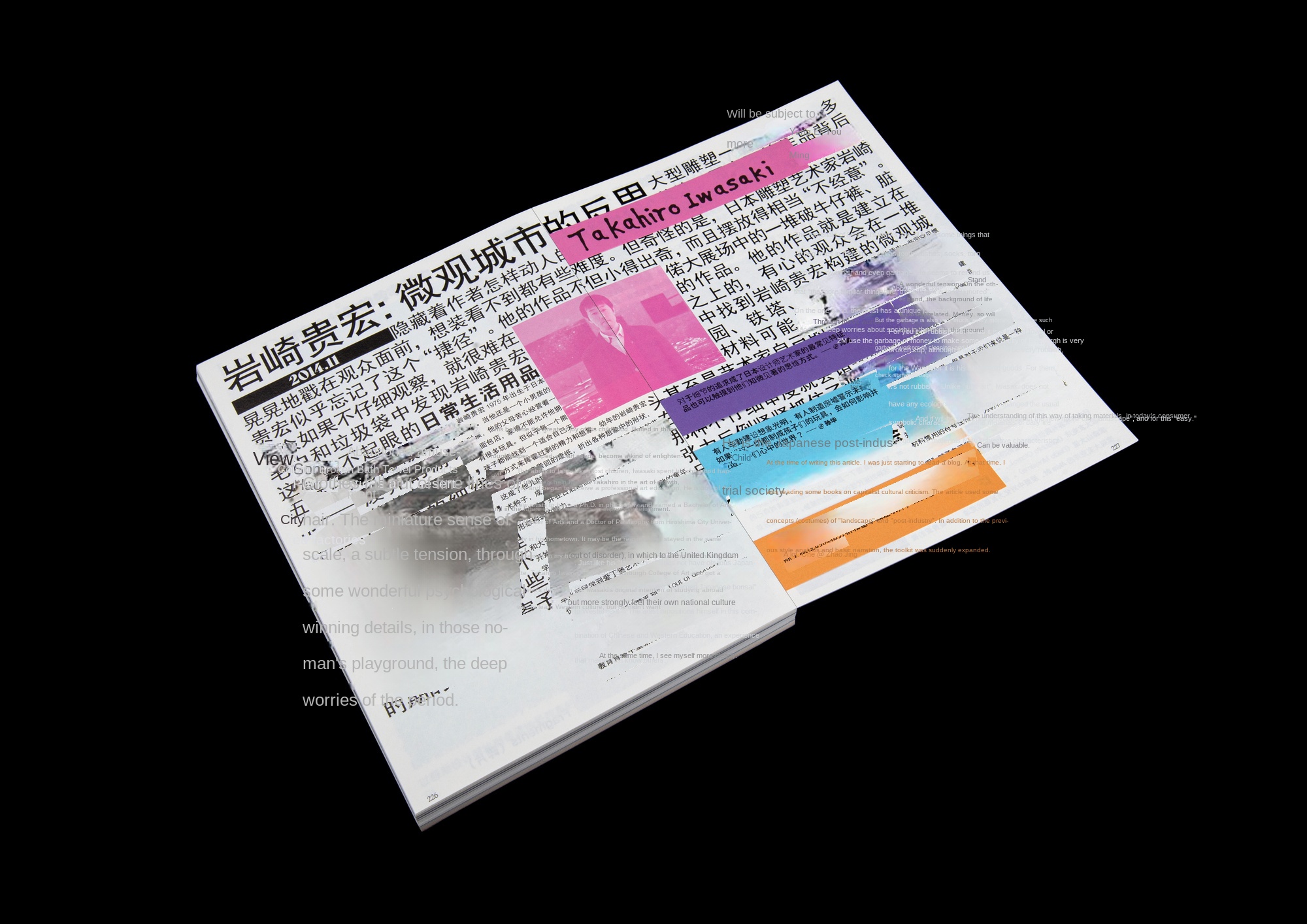
Inner Page
Bad Design Flip Book Video
Bad Design
The author has interviewed 12 designers and artists in different fields in a book. They are critical and reflective in their creation, divorced from the mainstream aesthetic taste, we define this strong commonality as "bad design".
I carry the concept of "bad" into every corner of the book in my design. The photos printed by Riso outside the protective seal need to be torn up together with the plastic seal film. This opening behavior is the beginning of "bad. The books are double-enclosed and the outermost enclosure has 24 sections, cut from the inside pages of the randomly selected books. I think everyone, every page, every word in the book is equal and has the right to be the subject of the cover. In the book, six young scholars from different fields were invited to comment on the articles respectively. Their words were interspersed in the book in the form of barrage. Each of them extracted a sentence and pasted it on the protective cover in the form of an external selling strip. This is our reverse resolution of "elite criticism.
The text used on the cover comes from my graffiti on the abandoned wall of the village in the city. The ugly and rough text just meets my demand for "bad. They are covered on the cover by multiple layers of screen printing to create a cluttered, difficult-to-read feeling. In typesetting, each article establishes its own completely independent grid system through font, font size, word weight and other means. This means of deliberately destroying regular reading logic only from vision makes pictures and texts form a state of external confusion, obscurity and internal self-consistency. This chaotic choreographed organization is also tactilely accentuated by the seven sheets used alternately in the book.
The creative practice takes "Bad Design" as the experimental carrier, and constructs a text field that deconstructs the traditional design paradigm. Through the philosophical reconstruction of "bad", this project has formed a cultural dialogue on three levels:
1. Dispelling mechanism of elite discourse system
Through the democratization design of 24 random envelopes, each inner page gets the right to speak on the cover, which coincides with the trend of "decentralization" in China's Internet era. The collection of criticism in the form of takeaway strips reduces the dimension of academic discourse to the market medium, forming a mild irony to the intellectual privileged class. The barrage annotation system transforms serious criticism into a flowing visual carnival, a deconstruction strategy similar to the banter deconstruction of authoritative narratives by Chinese Generation Z.
2. Visual translation of urban texture
The cover text misappropriates the wild aesthetics of the graffiti in the village in the city, and its coarse texture forms tension with the regular printing civilization. The visual siltation made by screen printing is just like the realistic picture of the traditional building skin covered by layers of commercial advertisements in the process of urbanization in China. The tactile montage of seven kinds of paper is a metaphor for the fault and collage of material culture in the process of rapid urbanization.
3. Reconstruction Experiment of Reading Ethics
By establishing 12 sets of independent grid systems, the deliberate creation of dyslexia became a revolt against the supremacy of efficiency. The participatory destruction of tearing up plastic seals and restoring books from sacred objects to destructible everyday objects, this anti-collection logic echoes the disenchantment of Chinese young people on "ritual consumption.
In the cultural dimension, the project takes "bad" as the prism, reflecting the identity anxiety of contemporary Chinese design circles -- in the gap between global aesthetics and local cultural consciousness, the proposal of "bad design" is essentially an attempt to establish alternative value coordinates. The seemingly chaotic visual grammar is an honest development of China's multi-cultural collision in the digital age.
Gu Hanyun, art director, T-Workshop founder, lives and works in Beijing, China. His works have been selected for many times in TDC in Tokyo, Japan and TDC in new york. He has won Hong Kong HKDA Award, Gold Award, Silver Award, Bronze Award, GDC Nomination Award, German IF, US ONE SHOW, UK D & AD, Asia's Most Influential Award, Bronze Award in the 9th National Book Design Art Exhibition, Nomination Award in Founder Font Competition, US IDA, German Red Dot Award, Taiwan Gold Dot Award and other awards.












